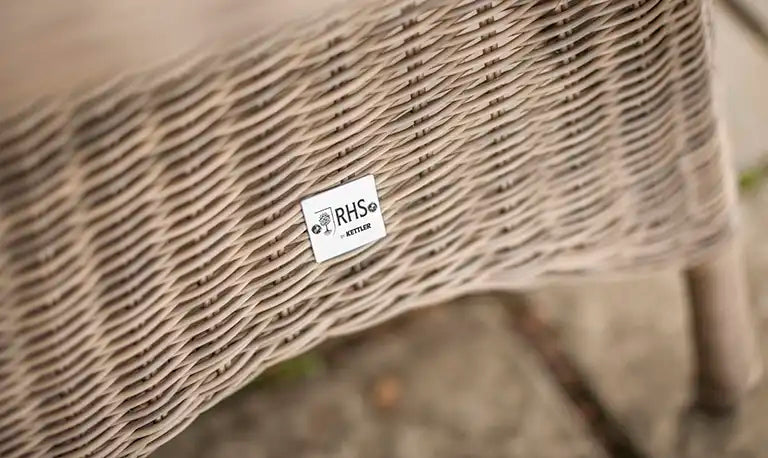
Wicker vs. Rattan: The Complete Guide
Rattan and wicker furniture have been a major part of home and garden decor for over 50 years. It has been the basis for iconic pieces of furniture, such as the Peacock chair which has been in iconic photographs of famous faces from John F Kennedy and Katharine Hepburn to Diana Ross. Yet, despite its prominence, the nuances between rattan and wicker are not widely understood.
Wicker and rattan are terms frequently used interchangeably in the furniture world, yet they denote vastly different concepts. As we will explore further, rattan and wicker are a combination of material and technique that has resulted in a wide array of furniture that not only adapts to both indoor and outdoor settings but lasts for seasons to come.
As we delve into the realm of wicker vs rattan, we look at the differences and similarities between wicker and rattan, and uncover the rich history of wicker weaving, from its ancient Egyptian origins to its resurgence in the mid-20th century. If you wish to find out about how to care for our rattan garden furniture or simply searching for ideas on how to use it in your home and garden, this is the blog for you. Discover more in our synthetic rattan furniture range, which offers the best qualities of the material in the form of sofas, tables, sunloungers, benches and more.
What is the Difference Between Wicker and Rattan?

In short, rattan is a natural material, while wicker is the technique used to weave that material into furniture.
When discussing furniture, “wicker” and “rattan” are often used interchangeably, when in actuality they refer to different aspects of the furniture. Wicker is a weaving technique that creates a lattice-like pattern, whereas rattan is a group of palm plant species from which we obtain material to create furniture. Rattan is often wickered to make furniture and baskets, but there are other wicker items made from materials other than rattan, including bamboo, reed and willow.
What is Rattan?
Rattan is a naturally renewable palm native to tropical regions of Africa, Asia and Australasia. Strong and flexible, yet lightweight, it’s a prized material used for a wide variety of furniture both indoors and out.
What is Wicker?
Conversely, wicker refers to the weaving method used to construct furniture. This technique involves interlacing material over a sturdy frame to form textured, breathable pieces that are resistant to wear and tear. The technique is suited best for pliable materials, it is implemented with natural fibres such as rattan, bamboo and reed.
The History of Wicker Furniture
The first people that have been discovered to create wicker furniture were the ancient Egyptians, who made it from naturally growing grass and cane and stored pieces in tombs. Then, it was passed through the hands of history, from the Roman Empire to Colonial America. Even back then, wicker furniture was recommended by design experts for homeowners who wanted to bring summer into their homes or have seating that let the wind through its lattice for a cooling effect.
It wasn’t until the 1960s and 70s when wicker-woven furniture made a huge revival, sparked by visionaries such as Paul Frankl and Gabriella Crespi who reacted to the florid designs of Victorian furniture by blending ornate touches with natural and affordable materials. This helped to define the look of the modern home and helped rattan to remain an influential presence in the interior design world since. In the mid-2000s, synthetic wicker became popular as an alternative for its ability to open up more colour and texture options.
Natural vs. All-Weather Rattan
Traditional rattan made from natural plant materials was often seen as a strictly interior piece of furniture, but once synthetic rattan came to the fore, it allowed designers and homeowners to bring furniture into the garden area for the first time. The beauty of having rattan furniture outside is its versatility – whether you want a modern feel or a rustic look.
Synthetic rattan, used in Kettler furniture, is made to be weatherproof. Where previously furniture did not stand a chance against rain, snow, sunlight and fading, synthetic rattan gives you the all-natural appearance that drew Frankl and Crespi to the material, but bolstered by UV-resistant materials that will defend against the elements. You can further protect your rattan garden furniture with a tailormade Kettler protective cover.
Garden and Home Ideas to Try with Rattan Furniture

With rattan furniture, you have access to a plethora of ideas to decorate and build on your home or garden area. If you have a large family and enjoy eating outdoors, consider a cohesive dining set that brings together your garden patio design with a refined and relaxing centrepiece. Alternatively, if you wish to use the garden as a space to unwind and enjoy company, Kettler’s synthetic rattan lounge and corner sofa sets are a blend of comfort and stability, with double-piped cushions that are stuffed with a body-loosening 8cm foam core. Or, have the best of both worlds – at Kettler, we have height-adjustable rattan tables that can transform from dining sets to lounge sets, so you can convert in a matter of seconds to whatever setting you desire.
Wicker-woven furniture can take many forms and do many jobs. If you want to create a relaxed feel, garden benches and 3-seater sofas make an excellent alternative to chairs, and if you need extra seating in certain circumstances, a stool can be used for guest seating or a footstool to put your feet up. The lightweight nature of rattan makes it easy to rearrange the layout however you wish to have it on any given day.
For inside the home, rattan has qualities that make it suitable for conservatory furniture. Conservatory table and chair sets react well to the changing temperatures of the conservatory, ensuring that the furniture remains durable and comfortable without warping or deteriorating over time.
The best ideas come from pairing pieces of furniture together to add to your experience. Try a sumptuous rattan sunlounger with a side table so you can make the most of every blade of green grass while the sun is out, or pair a rattan fire pit table with matching gas bottle storage so you can enjoy your garden even when the sun goes down.
How to Care for Rattan Furniture
Synthetic rattan furniture is known for its durability and weatherproof qualities, but applying proper care ensures its longevity and maintains its appearance, making it a lasting addition to your home or garden. Here’s how you can keep your rattan furnishings in pristine condition:
- Cleaning: Use warm soapy water to clean the furniture. For a more comprehensive care approach, consider the complete wicker & rattan care set available on the Kettler website.
- Dusting: Regularly remove dust using a clean, soft brush. For surface cleaning, a clean damp cloth is effective.
- Protection: Use pads, mats, and coasters under plates, glasses and cups to guard against scratches, spills, stains and heat damage. In the event of spills, wipe them away immediately to prevent staining.
- Immediate Action: Tree sap and bird droppings can be particularly damaging if left untreated. Clean these off as soon as possible.
- Covers: While synthetic wicker is robust, protective covers are recommended for most items to shield them when not in use.
To complement your rattan garden furniture, Kettler offers weatherproof cushions designed for outdoor use. Here’s how to care for them:
- Storage: Cover cushions when not in use immediately after use. If exposed to rain, they can dry within 20 minutes to 2 hours, depending on conditions.
- Winter Storage: Store in a dry, ambient temperature during the winter months to preserve their condition.
- Cleaning: Sponge clean only. Kettler cushions are not suitable for dry cleaning or machine washing. For optimal care, use our fabric care kit, available on our website, to clean and protect your cushions.
By following these care instructions, you can ensure that your rattan furniture and accessories remain a beautiful part of your living space for years to come.
Lift Your Home with Kettler’s Rattan Garden Furniture
Whether you are looking to refresh your outdoor living space with dining sets, create a cosy corner with our sofa sets, or relax in the sun on our sun loungers, Kettler’s range of synthetic rattan garden furniture will have what you need. Our mission to create furniture for the best of times has illuminated us since the 1960s, and our team is happy to help with finding the right furniture for you. Browse our rattan furniture section today, or reach out to us with any questions.
Related Articles
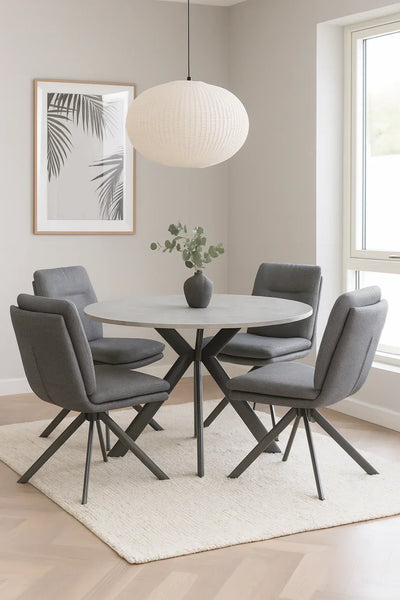 Round, Rectangular, or Square? Top Tips in Choosing the Right Indoor Dining Table Shape
Round, Rectangular, or Square? Top Tips in Choosing the Right Indoor Dining Table Shape
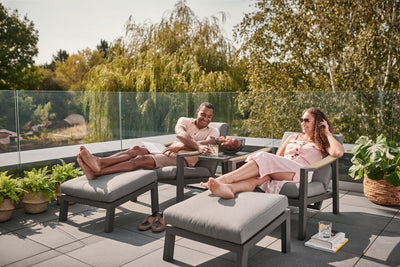 How to Cope With Heatwaves: Creating Outdoor Comfort for You and Your Pets
How to Cope With Heatwaves: Creating Outdoor Comfort for You and Your Pets
 Get The Mediterranean Look For Your Garden
Get The Mediterranean Look For Your Garden
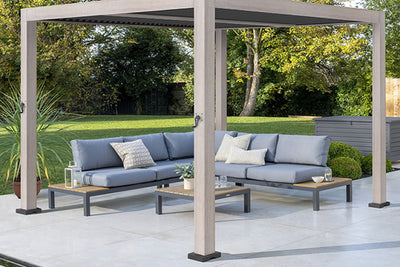 The Ultimate Guide to Pergolas: Ideas for Your Garden | Kettler
The Ultimate Guide to Pergolas: Ideas for Your Garden | Kettler
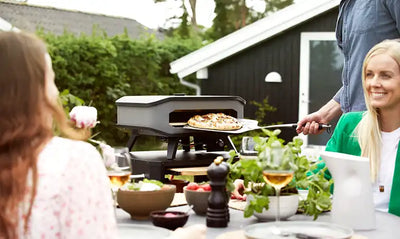 Pizza Oven Buyer's Guide: Which is Best For You?
Pizza Oven Buyer's Guide: Which is Best For You?
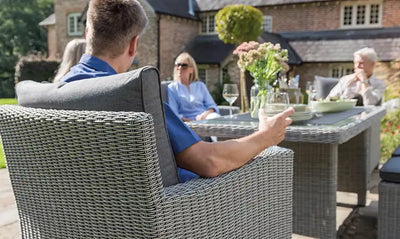 The Best Quality Rattan Garden Furniture Sets
The Best Quality Rattan Garden Furniture Sets
 What to Consider When Building an Outdoor Kitchen
What to Consider When Building an Outdoor Kitchen
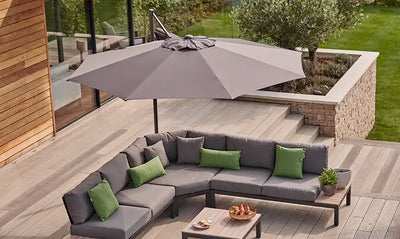 What is the Best Shape for a Garden Parasol?
What is the Best Shape for a Garden Parasol?





















































